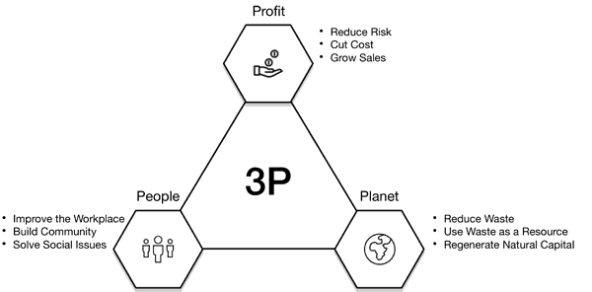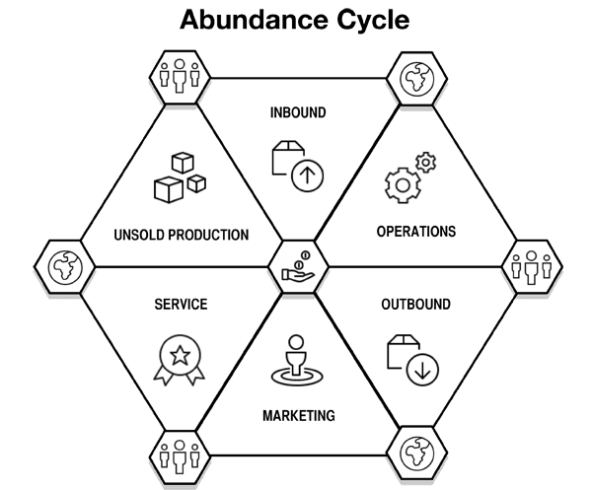In 1987, the United Nations Brundtland Commission offered the following definition of sustainable development, “Development which meets the needs of current generations without compromising the ability of future generations to meet their own needs.” Sustainability has proven a powerful concept, infiltrating society at every level—from laundry detergents to investment portfolios to climate change.
Unfortunately vagueness and uncertainty have arrived alongside ubiquity. Popularity leaves the term meaning both everything and nothing. Well-intentioned communities and enterprises seeking sustainability therefore often struggle to make progress; while many cite expansive goals of improving social, environmental, and economic welfare, it is unclear what those goals mean or how to act. Recent surveys of business executives show that while two-thirds believe sustainability is important to their business, only 10 percent feel they are fully tackling sustainability issues.
Perhaps even worse, a focus on trade-offs between the needs of current and future generations leads people to fear sustainability as a zero-sum game. Opponents—climate-denying politicians, industry groups seeking to protect their interests, and others—seize upon this notion of scarcity and portray sustainability as a series of sacrifices. The fear that helping the environment will hurt the economy, for example, has come up time and time again over decades of climate change negotiations.
It's time for a new terminology that clarifies and motivates people to action—terminology that goes beyond the language of sustainability, and articulates the potential for mutual prosperity and abundance we have been overlooking. Insofar as abundance simultaneously expands economic opportunity, strengthens community, and restores the planet, it provides an important mechanism to accomplish the Paris climate goals.
Solving Global Warming with an Abundant Perspective: Samsø, Denmark
In 2007, while the world remained locked in stagnant climate talks, the Danish island of Samsø became the world’s first carbon-negative community, producing more renewable energy than it consumed.
Are you enjoying this article? Read more like this, plus SSIR's full archive of content, when you subscribe.
In the wake of the Kyoto Protocol, the Danish government sought out a candidate to become the country’s first 100 percent renewable energy community. It selected Samsø. Samsø’s conservative, agricultural community began leveraging wind, solar, biomass, and efficiency to redefine its energy footprint.
Søren Hermansen, a local farmer and educator, led the effort, adopting an abundant perspective. In meetings over coffee and beer, residents discussed their aspirations. They wanted a thriving community for their children and energy independence from fossil fuels, all while bolstering the local economy, and without sacrificing comfort or quality of life.
In response, Søren spent 10 years catalyzing community-owned enterprises to satisfy these abundant goals. The projects offered healthy economic returns; they brought in $70 million of local investment to the community of 4,000 people. Construction projects provided jobs and new skills to tradespeople. Insulating homes reduced energy costs while increasing comfort and disposable income. Imported fossil fuel expenditures fell by an estimated $7 million annually, and using agricultural waste as heating fuel gave farmers additional income, promoting economic growth.
Søren bridged the language gaps that often hinder communications between stakeholders. He positioned the renewable energy and conservation projects in terms of economic and community revitalization. The nature of the conversation changed from tradeoffs to benefits. And after spending a month on Samsø with Søren and his team, the lessons were clear: Don’t underestimate the importance of language and perspective in building bridges between potential adversaries.
On the departing ferry, I asked one of our group members what he learned. He replied, “I used to think the solution to climate change was a technical problem, now I believe it’s a social problem.”
Only by moving beyond the broad generalities of sustainability and seeking abundance for all stakeholders was Samsø able to meet its objectives.
Seeking Abundance Reveals Hidden Opportunities
Abundance lies at the heart of the natural and human worlds. Nature breeds and multiplies, creating innumerable species and biological niches. Communities strive to be robust and resilient. Organizations seek growth and prosperity. Harmonizing these tendencies yields impressive results.
Abundance turns scarcity on its head and reorients toward finding new possibilities. Abundant solutions create a mutually reinforcing cycle whereby we can achieve economic, social, and environmental improvements together. Seeking this cycle of abundance drives innovation and opportunity by offering new ways to examine problems.
The natural resources available to us may be fixed, but we are remarkably inefficient in using them: It takes roughly 1 million pounds of materials annually to support one American’s lifestyle, and less than 1 percent of everything we produce is still in use after six months. The opportunities are breathtaking. But abundance goes well beyond efficiency—just as organic agriculture revitalizes and improves fertility, an abundant economy has the potential to be regenerative in unforeseen ways.
The chart below details how an abundant perspective seeks specific simultaneous outcomes for people, the planet, and profit.
Applying these goals to activities common to all communities and enterprises reveals opportunities and creates what I call the “Abundance Cycle.”
 An abundant perspective seeks specific outcomes with prosperity for all stakeholders. (Image by Jay Friedlander)
An abundant perspective seeks specific outcomes with prosperity for all stakeholders. (Image by Jay Friedlander)
Abundance Cycles have taken hold in industries and communities beyond Samsø, but abundance is not kind to the status quo. True abundance demands continuous improvement. Becoming carbon negative was a feat in 2007 and remains an impressive achievement. Today, Samsø is rejuvenating itself again as it strives to become fossil fuel free by 2030. And by 2030, Samsø will be facing new challenges that demand different actions to remain abundant.
 The Abundance Cycle applies the 3P perspective to core activities. (Image by Jay Friedlander)
The Abundance Cycle applies the 3P perspective to core activities. (Image by Jay Friedlander)
Abundance has broad implications as we address climate change and development goals. Beyond discussions in Paris and New York, every organization, business, and community is an island with its own culture of abundance or scarcity. Going forward, we must begin to continually ask ourselves, “Is my island abundant?”
Support SSIR’s coverage of cross-sector solutions to global challenges.
Help us further the reach of innovative ideas. Donate today.
Read more stories by Jay Friedlander.

